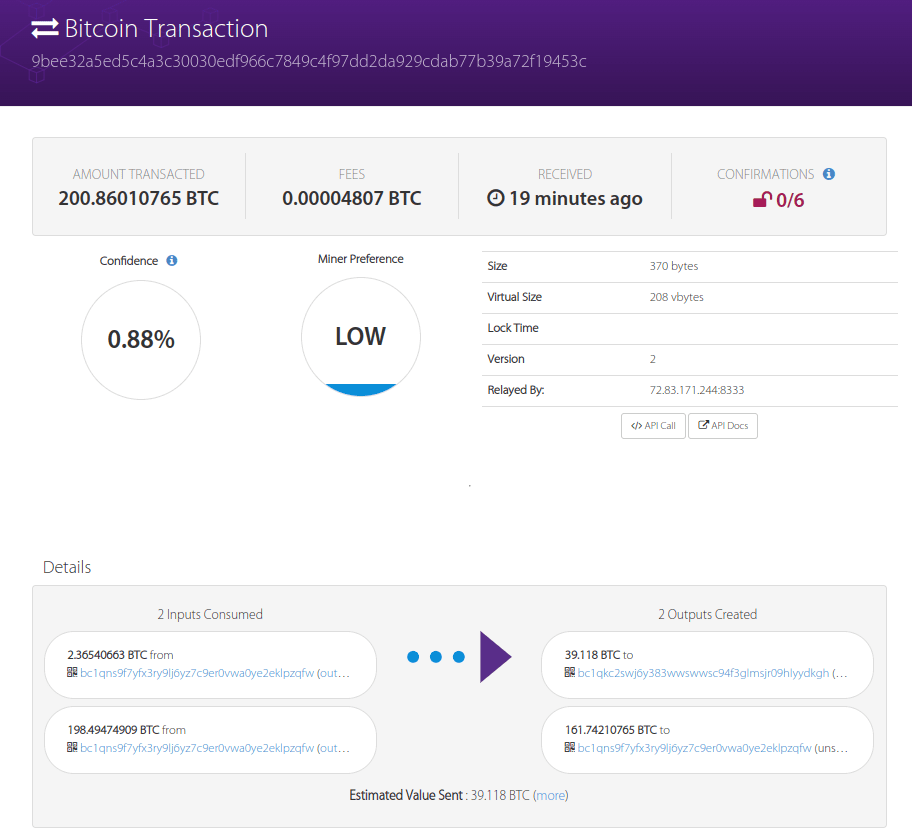
What is a UTXO in Bitcoin and its role in preventing double-spending? Learn about one of the most relevant concepts of Bitcoin and its accounting system, meet the UTXO.
The acronym UTXO (Unspent Transaction Output) is related to the proper functioning of blockchains and the concept of double-spending. UTXOs are created during transactions and serve to track ownership and prevent double-spending. UTXOs play a crucial role in the functioning, security, and transparency of the Bitcoin network. In this article, we will explore what they are, how they function within the Bitcoin ecosystem, and provide simple examples of their use. By understanding UTXOs, readers will gain valuable insight into the importance of this fundamental concept in safeguarding the integrity and reliability of the Bitcoin network.
What is a Bitcoin UTXO
A UTXO is a unit of Bitcoin currency not spent in a previous transaction. UTXOs are Bitcoin’s underlying accounting model and are used to track Bitcoin ownership. Each Bitcoin transaction has two parts: input and output. The input is one or more UTXOs being spent (money in your wallet that you are sending to another address or wallet). The result is the creation of one or more new UTXOs (money arriving at a unique address or wallet).
As a user, to spend a UTXO, you will need to provide the digital signature that proves you are the owner of the UTXO you wish to spend. The Bitcoin wallet generates the signature using the private key linked to the address that received the UTXO. After generating the spending script and verifying its cryptographic validity, our wallet sends the information to the Bitcoin network. The transaction is then confirmed and included in the subsequent blocks of the network. Once the transaction is confirmed, the corresponding balance goes away, and our wallet will no longer have a record of it in our favor.
How does a UTXO work?
As mentioned above, UTXOs are the underlying accounting model of Bitcoin and are used to track Bitcoin ownership.
UTXOs are composed of the following elements:
- Amount: number of bitcoins or balances handled by the UTXO.
- Address: address to which a UTXO was sent or received
- TX ID: hash or TX ID of the transaction from which the UTXO originates
- The digital signature of the UTXO owner is visible in the Bitcoin Script of the transaction.
Analyzing the information of a UTXO
You can appreciate these elements in the following mempool screenshot. The entries that a user uses are on the left. The transaction has a TX ID: 9bee32a5ed5c4a3c30030edf966c7849c4f97dd2da929cdab77b39a72f19453c.

The destination, in this case, is on the right. The first destination (address: bc1qkc2swj6y383wwswwsc94f3glmsjr09hlyydkgh) is the target person or purse of your operation, while the second destination ( bc1qns9f7yfx3ry9lj6yz7c9er0vwa0ye2eklpzqfw) is an exchange address reintegrating the UTXO balance not spent. Therefore, these destinations represent two new UTXOs that you can use if you can verify the corresponding private key to unlock them.
So, it is clear that when a user receives a UTXO, it is in his wallet. This wallet keeps a list of all the UTXOs owned by the user. To spend a UTXO, the user must provide a digital signature proving that they are the owner of the UTXO. The UTXO’s signature is generated with the private key of its receiving address. When you send a Bitcoin transaction, the signature is inside it. The system sends this transaction to the Bitcoin network and adds it to a block. Once the transaction is inside a block, the Unspent Transaction Output (UTXO) is spent and removed from the pool of unspent UTXOs.
Advantages of a UTXO
The UTXO model offers numerous advantages over other cryptocurrency accounting models. Firstly, it is both simple and efficient. This model only needs two elements to represent a UTXO: the number of bitcoins and the destination address of the UTXO. As a result, it is much more efficient than other models, such as the Account Model, used in Ethereum.
It is a secure and censorship-resistant model. To spend a UTXO, the user must provide a digital signature proving that they own the UTXO. This signature is cryptographically secure, making it challenging to forge. In addition, the UTXO model does not require a trusted third party to verify transactions, making it resistant to censorship, as no central authority can prevent transactions from being sent.
The UTXO model is flexible and allows payment of fractional amounts. The system can divide them into arbitrary fractions, which provide payment of fractional shares of bitcoins. This characteristic is vital for many applications, such as micropayments.
Disadvantages of a UTXO
However, the UTXO model also has some disadvantages. It can be inefficient when handling large transactions with multiple inputs because these transactions require representing each script for addresses and their corresponding UTXOs, which, in the end, makes transactions with large numbers of UTXOs very cumbersome and hefty fees.
Secondly, the complex UTXO model limits flexibility in creating advanced platforms. You can see this problem in the difficulty of generating advanced Smart Contract systems in Bitcoin, something that the UXTO model could improve. The best proof is that Cardano uses a model they know as eUTXO or extended UTXO, which allows for addressing these problems by creating a mixed system that unites the best UTXOs and account models.
Importance in the Bitcoin security model
As mentioned, UTXOs are unspent outflows from previous transactions and represent the remaining amounts of the digital currency. They are created during transactions and serve to track ownership and prevent double-spending. Following this scheme, the system calculates the wallet balances by summing the values of UTXOs associated with a specific Bitcoin address. In addition, UTXOs enable transparency, verifiability, and auditing of Bitcoin transactions. By tracking UTXOs, the Bitcoin network can verify the authenticity of transactions and prevent double-spending without relying on third parties. In short, they are vital for security and trust in the Bitcoin network.
All this makes UTXOs a fundamental concept for ensuring the security, transparency, and trustworthiness of the Bitcoin network. In a way, they exemplify the potential of blockchain tech to transform the world of finance and decentralized systems.